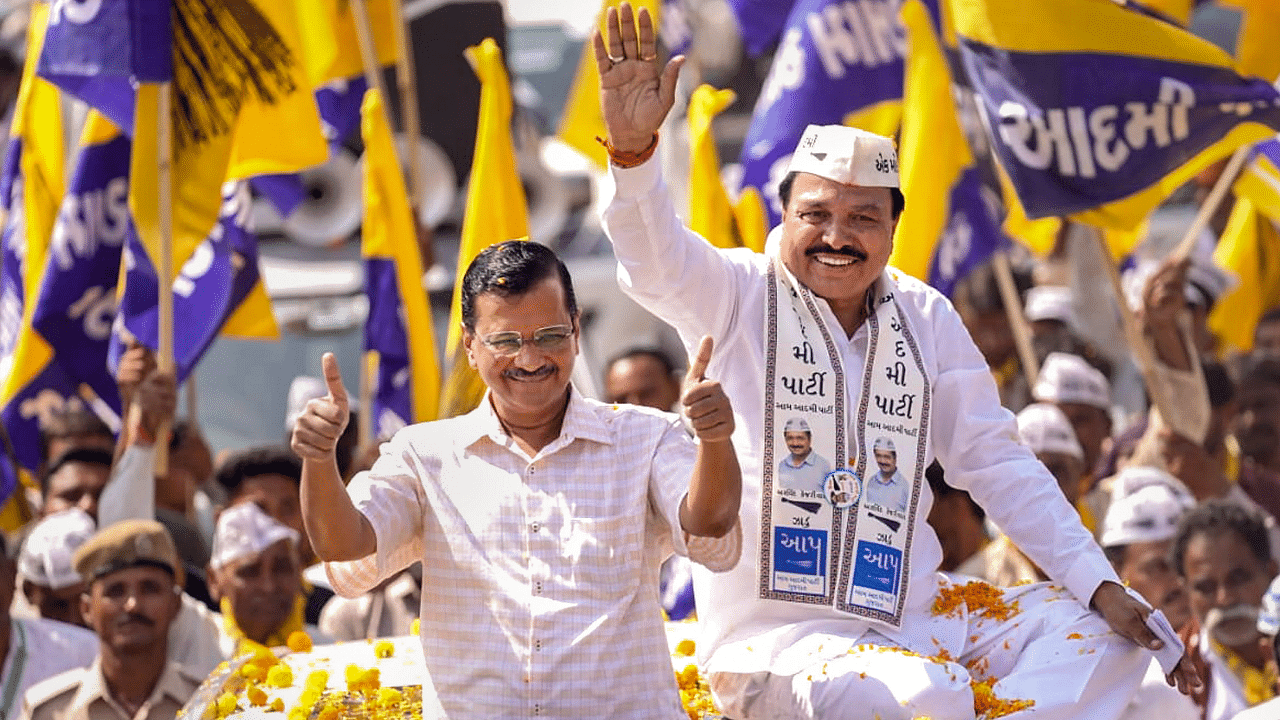
In any state Assembly election, it is interesting to analyse how different regions of that state voted in the past and if that would give an indication of what the voting pattern would be like in the current election. In the case of Gujarat, it is doubly interesting since the two most powerful men in the country – Prime Minister Narendra Modi and Home Minister Amit Shah – come from there.
The western state has elected the BJP to power continuously since 1995 in six elections, and every time it has trounced its only rival, Congress. However, this time, there is a third party in the fray, and it – the Aam Aadmi Party (AAP) – is giving the BJP a spirited fight while the Congress campaign has been low key. In the last Assembly election of 2017, while BJP did return to power, for the first time in 27 years, it secured less than 100 seats – 99 – as a boisterous Congress led by Rahul Gandhi bagged 77.
Gujarat is normally divided into five regions: north, central, south, Kutch and Saurashtra. North Gujarat has 32 Assembly seats in six districts, which includes Banaskantha, Patan, Mehsana, Sabarkantha, Gandhinagar; Central Gujarat sends 61 MLAs from eight districts (Ahmedabad, Vadodara, Chota Udepur, Godhra, Anand, Dahod, Kheda, Panchmahal); South Gujarat has 35 seats in seven districts (Surat, Bharuch, Narmada, Tapi, Navsari, Valsad, Dang), and Kutch-Saurashtra together have 54 seats in 12 districts including Kutch, Mandvi, Morbi, Bhavnagar, Porbandar, Jamnagar, Amreli, Rajkot, Dwarka, Junagadh. In the last elections, BJP took the lead in two regions while Congress took the honours in the other two.
It is said that whichever party wins the most seats in the central region wins Gujarat. Needless to say, the BJP has been doing that since 1995, including in 2017 when it won 37 of the 61 seats as against Congress’ 22.
However, compared to the previous polls, the ruling party’s tally saw a decline in 2017 possibly because of the Patidar agitation (its poster boy Hardik Patel is now contesting from Gandhinagar on a BJP ticket). The Adivasi, OBC and Dalits, too, are in good numbers in this region. While Patidars have been the backbone of the BJP, in 2017 their votes got divided between it and the Congress. Like here, across the state, too, Congress has the backing of the underprivileged classes, but this time around, all three parties – BJP, Congress and AAP – are making a determined bid for their votes.
South Gujarat, where ‘diamond city’ Surat is located, will be interesting to watch this time. In the last Assembly polls, it was here that the BJP got the final push to cross the majority mark of 92, winning 25 of its 35 seats. BJP swept Surat, winning 15 of its 16 seats. However, AAP’s performance in the Surat Municipal Corporation polls last year has made everyone sit up and take notice. The party won 27 (out of 120) seats while Congress failed to win even one. AAP secured 28.47% votes -- a credible show for a fledgling party (it also secured 21.77% in Gandhinagar and 17.4% in Rajkot municipal polls).
North Gujarat is dominated by rural and tribal areas alongside urban Gandhinagar. In this region, BJP failed to gain a lead over Congress in 2017: Congress bagged 18 of 32 seats, BJP the rest.
In Kutch-Saurashtra, Congress won 30 and the BJP 23 in 2017. Congress swept Gir Somnath, Junagadh, Amreli, Morbi and Surendranagar. This time, BJP is laying added stress on North Gujarat and Saurashtra, announcing sops and intensifying booth-level campaigning. Here, too, AAP is trying to gain a foothold.
Seats and vote share
Gujarat’s vote share and seats won present an interesting study despite the fact that BJP has won every election since 1995. After the 1990 polls in which it bagged 67 seats (BJP formed government then with Janata Dal being the lead partner; Chimanbhai Patel of JD became CM and Keshubhai Patel of BJP, Deputy CM), it was in 2017 that the BJP’s tally fell to a low of 99.
From 67 in 1990, BJP nearly doubled its seats five years later with 121 seats. But a rebellion within the party pushed the government into a crisis from 1995 to 1997. In the 1998 polls, BJP returned with 117 seats. However, from 1995 to 2017, BJP’s winning margin in terms of seats has been declining -- except for 2002 (Godhra and post-Godhra violence) when it won 127 seats, the highest so far.
But BJP’s vote share has been a remarkable story of how a party has consistently managed to earn the confidence of the people election after election since 1990. If the party won 26.69% votes in 1990, it increased consistently in successive elections, except for minor falls in 2007 and 2012, leading, ironically, to a peak of 49.44% in 2017.
Interestingly, Congress’ vote share, too, kept rising but it did not convert into enough seats to win power. It has secured votes in excess of 40% in every election since 1995, ending with 41.44% in 2017. But Gujarat’s bipolar scene of the last 30 years is set to change with AAP’s entry this time. The last time Gujarat saw three parties vying for power was in 1990.
In the last six elections, even as both their vote shares have risen, the BJP has maintained a 8-10% lead against the Congress. This is the reason why Congress may have come close to power but has not able to deliver that final punch and topple the BJP in the last six elections.
Three parties are vying for power now. Besides the key issue of who will form the government this time, the question is, whose votes will AAP snatch -- those of Congress or of BJP?
(The writer is a political analyst)
